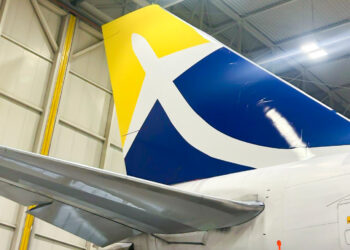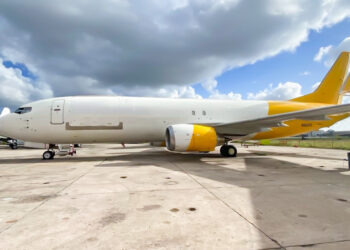No products in the cart.
The turboprop freighter fleet in 2017

Today we begin a multi-part analysis of the worldwide fleet of turboprop freighter aircraft in commercial service, starting with some background and then showing the breakdown of the fleet by type and operator. You can read Part II here, and Part III here.
Two years ago, in our analysis of the turboprop freighter fleet in 2015, we predicted that demand for these 4-to-9-tonne payload freighters would increase only slowly in the coming years – that growing demand for express feeder service in Asia would be met by narrowbody jet freighters, while the fleets in the rest of the world, particularly Europe and North America, where 90% of these turboprop freighters are operated, would remain relatively stable. The two years since have borne out our prediction, as the fleet grew from 187 units in June 2015 to 194 in 2016 (an increase of just 3.7%.), while in the last twelve months the fleet shrank by three units to 191, a decline of 1.5% (although still up 2.1% over 2015).
Looking back a little further provides some historical perspective. As package volumes declined in Europe and North America during the recession of 2008/2009, the big express companies cut off the expansion of their feeder freighter fleets. In 2008, the fleet actually shrank slightly, as carriers parked aircraft, and canceled conversion plans. Slow growth returned during 2009, and that trend has continued, in fits and starts, through the present.
Although the number of 4-to-9-tonne turboprop freighters has changed relatively little in recent years, the composition of the fleet has begun to change, as older ATPFs and ATR 42Fs have been retired, replaced mainly with ATR 72Fs. Between 2011 and 2017, the share of ATR 72Fs in the turboprop freighter fleet has risen from 23.0% to 34.0%. During the same period, the share of ATR 42Fs declined from 25.3% to 22.5%. The share of ATPFs has decreased the most, down to 13.6% from 24.0% five years ago. No other types changed by more than two percentage points during the past five years.
The chart below shows the distribution of the turboprop freighter types important in the makeup of the current and future fleet. There are hundreds of smaller aircraft (Cessnas, Beechcraft, Metros, and others) in use as freighters, but they are beyond the scope of this analysis. Older types – such as Shorts 330/360s and F27s – continue to be applied in a freighter role, but their advancing age ensures that the newer types will gradually replace them.
The distribution of the turboprop freighter fleet is quite different from the distribution of the jet freighter fleet. Of the 191 units now in operation, 59.2% (113 units) are operated by European carriers, mostly under contract to integrators or national postal services. 27.7% (53 units) are operated in the US and Canada, many in feeder service for FedEx and UPS, but an increasing number are operated by small, independent carriers on their own behalf. Just 13% of the fleet tracked in this chart operates in the rest of the world: 1.6% (3 units) in Latin America, 4.2% (8 units) in Asia Pacific, and 7.3% (14 units) in Africa.
In the past, we have said that rapidly growing domestic and intra-regional demand in the Asia-Pacific express market would generate a gradual increase in that region’s share of the total turboprop freighter fleet. However, that demand growth, driven by the growth in e-commerce, has been so great that carriers have chosen instead to build their jet freighter fleets as rapidly as possible. Whether Chinese express companies will turn to turboprops to extend their air networks to towns in rural areas in the future remains to be seen.
In Part II of this analysis we will look more closely at the fleet on a type-by-type basis.

Those interested in learning more about the worldwide demand for freighter aircraft over the next 20-years are invited to check out Air Cargo Management Group’s Freighter Forecast, which for the first time, includes turboprop freighter demand. The report contains analysis of future prospects for fifteen aircraft types that will dominate the future freighter market, including production status, performance characteristics, and freighter conversion program availability.





